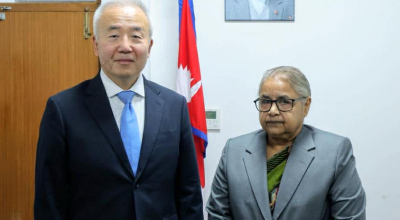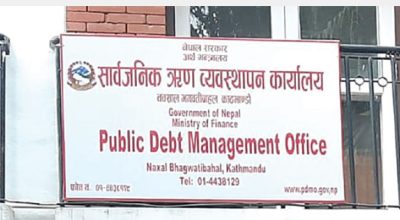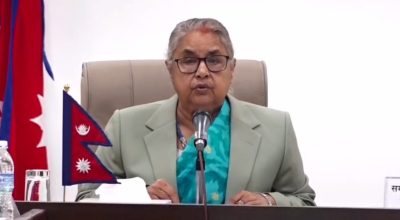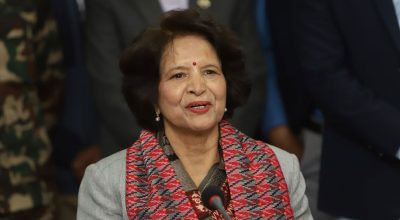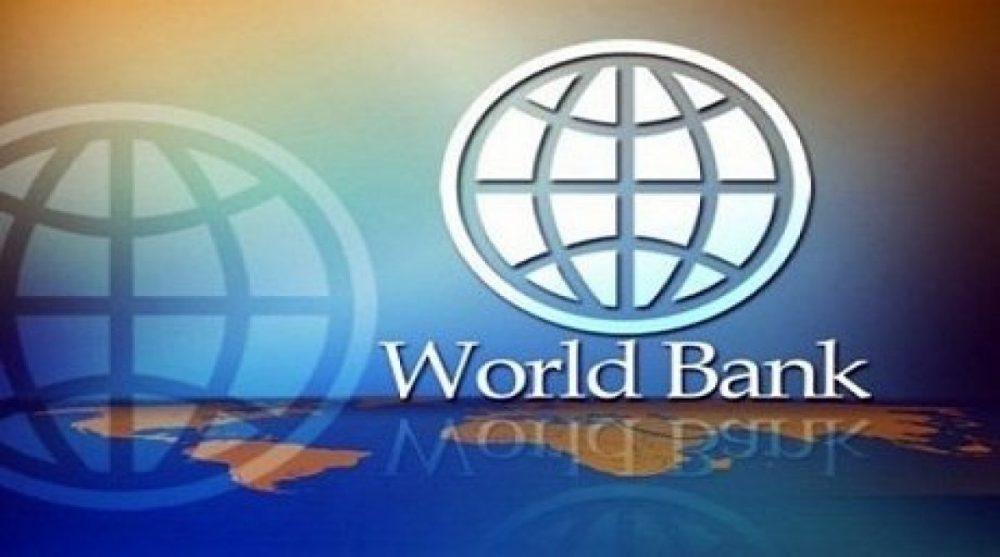
WASHINGTON, Oct 14 – In line with a global downward trend, growth in South Asia is projected to slow to 5.9 percent in 2019, down 1.1 percentage points from April 2019 estimates, casting uncertainty about a rebound in the short term, says the World Bank in its twice-a-year regional economic update.
The latest edition of the South Asia Economic Focus, Making (De)centralization Work, finds that strong domestic demand, which propped high growth in the past, has weakened, driving a slowdown across the region. Imports have declined severely across South Asia, contracting between 15 and 20 percent in Pakistan and Sri Lanka. In India, domestic demand has slipped, with private consumption growing 3.1 percent in the last quarter from 7.3 percent a year ago, while manufacturing growth plummeted to below 1 percent in the second quarter of 2019 compared to over 10 percent a year ago.
“Declining industrial production and imports, as well as tensions in the financial markets reveal a sharp economic slowdown in South Asia,” said Hartwig Schafer, World Bank Vice President for the South Asia Region. “As global and domestic uncertainties cloud the region’s economic outlook, South Asian countries should pursue stimulating economic policies to boost private consumption and beef up investments.”
The report notes that South Asia’s current economic slowdown echoes the decelerating growth and trade slumps of 2008 and 2012. With that context in mind, the report remains cautiously optimistic that a slight rebound in investment and private consumption could jumpstart South Asia’s growth up to 6.3 percent in 2020, slightly above East Asia and the Pacific, and 6.7 percent in 2021.
In a focus section, the report highlights how, as their economies become more sophisticated, South Asian countries have made decentralization a priority to improve the delivery of public services. With multiple initiatives underway across the region to shift more political and fiscal responsibilities to local governments, the report warns, however, that decentralization efforts in South Asia have so far yielded mixed results.
For decentralization to work, central authorities should wield incentives and exercise quality control to encourage innovation and accountability at the local level. Rather than a mere reshuffling of power, the report calls for more complementary roles across tiers of government, in which national authorities remain proactive in empowering local governments for better service delivery.
“Decentralization in South Asia has yet to deliver on its promises and, if not properly managed, can degenerate into fragmentation,” said Hans Timmer, World Bank Chief Economist for the South Asia Region. “To make decentralization work for their citizens, we encourage South Asian central governments to allocate their resources judiciously, create incentives to help local communities compete in integrated markets, and provide equal opportunities to their people.”
| Real GDP growth in South Asia | 2018 | 2019 (e) | 2020 (f) | 2021 (f) |
| Afghanistan (CY) | 1.8 | 2.5 | 3.0 | 3.5 |
| Bangladesh (FY) | 7.9 | 8.1 | 7.2 | 7.3 |
| Bhutan (FY) | 4.6 | 5.0 | 7.4 | 5.9 |
| India (FY) | 6.8 | 6.0 | 6.9 | 7.2 |
| Maldives (CY) | 6.7 | 5.2 | 5.5 | 5.6 |
| Nepal (FY) | 6.7 | 7.1 | 6.4 | 6.5 |
| Pakistan (FY, factor prices) | 5.5 | 3.3 | 2.4 | 3.0 |
| Sri Lanka (CY) | 3.2 | 2.7 | 3.3 | 3.7 |
Source: World Bank. GDP: Gross Domestic Product, CY: Calendar Year, FY: Fiscal Year, e: Estimate f: Forecast; in Bangladesh, Bhutan, Nepal, and Pakistan, 2019 refers to FY2018/19 and ended in June 2019. For India, 2019 refers to FY2019/20 and will end in March 2020.
- In Nepal, GDP growth is projected to average 6.5 percent over this and next fiscal year, backed by strong services and construction activity due to rising tourist arrivals and higher public spending.
- In Afghanistan, with improved farming conditions and assuming political stability after the elections, growth is expected to recover and reach 3 percent in 2020 and 3.5 percent in 2021. However, the outlook is highly vulnerable and may be affected by deteriorating confidence due to uncertainty around international security assistance, election-related violence, and peace negotiations with the Taliban.
- In Bangladesh, GDP is projected to moderate to 7.2 percent this fiscal year and 7.3 percent the following one. The outlook is clouded by rising financial sector vulnerability, but the economy is likely to maintain growth above 7 percent, supported by a robust macroeconomic framework, political stability, and strong public investments.
- In Bhutan, GDP growth is expected to jump to 7.4 percent this fiscal year with the commissioning of Mangdechhu, a new hydropower plant, and the completion of the maintenance of Tala, another one. Growth in fiscal year 2021 is forecast just below 6 percent on the base of strong tourism growth and increased revenue from the existing power plants.
- In India, after the broad-based deceleration in the first quarters of this fiscal year, growth is projected to fall to 6.0 this fiscal year. Growth is then expected to gradually recover to 6.9 percent in fiscal year 2020/21 and to 7.2 percent in the following year.
- In Maldives, growth is expected to reach 5.2 percent in 2019, due to a slowdown in construction following the completion of the international airport and a connecting bridge. However, with support from new infrastructure investment and the expansion of tourism, growth is expected to pick up again to an average of 5.6 percent over the forecast horizon.
- In Pakistan, growth is projected to deteriorate further to 2.4 percent this fiscal year, as monetary policy remains tight, and the planned fiscal consolidation will compress domestic demand. The program signed with the IMF is expected to help growth recover from fiscal year 2021-22 onwards.
- In Sri Lanka, growth is expected to soften to 2.7 percent in 2019. However, supported by recovering investment and exports, as the security challenges and political uncertainty of last year dissipate, it is projected to reach 3.3 percent in 2020 and 3.7 percent in 2021.
(Source: World Bank)







